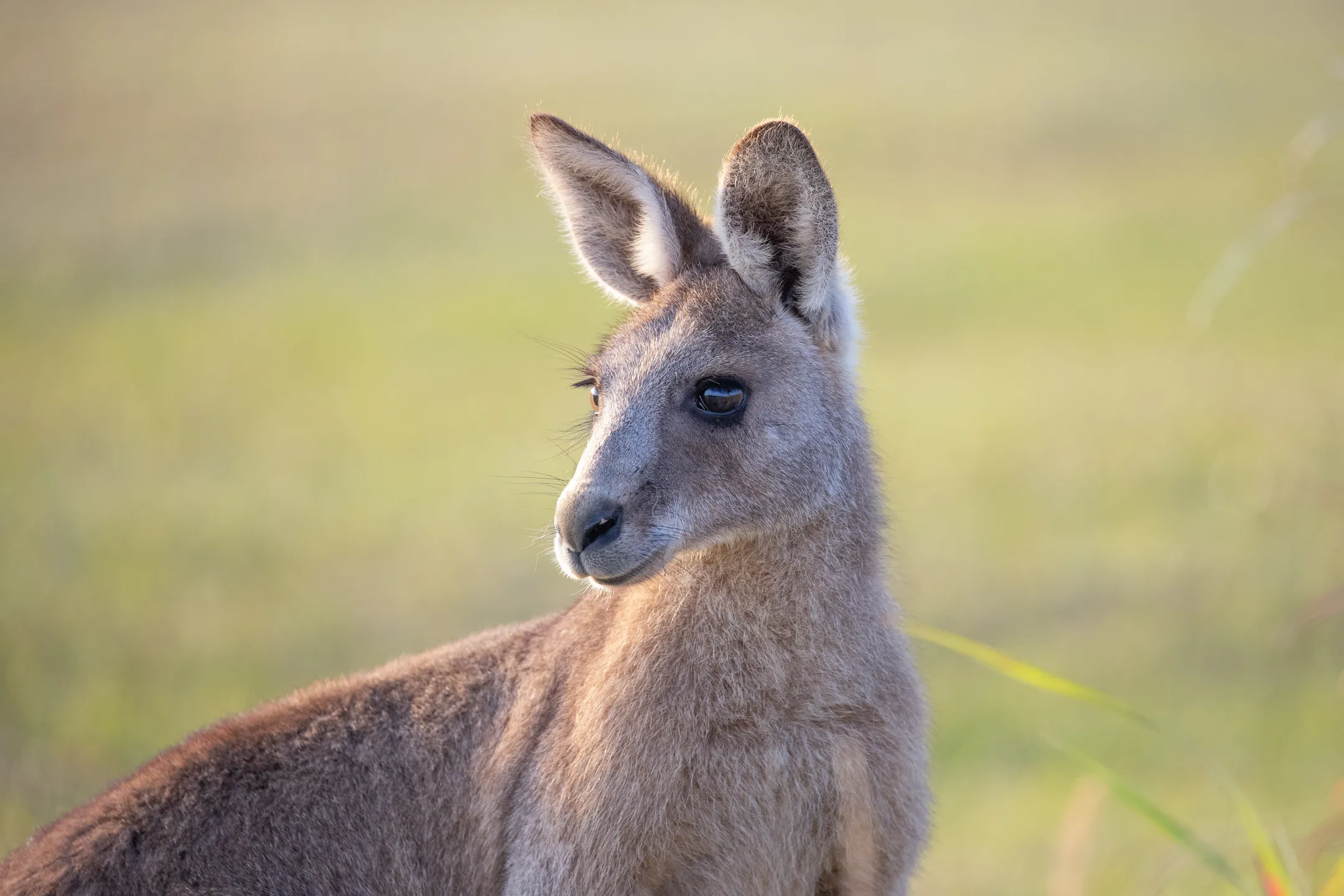Macropods
Learn more about plans to help protect kangaroos, wallabies and other macropods living on the Sunshine Coast.

There are 9 members of the macropod family living on the Sunshine Coast. The 7 larger macropods covered by the draft macropod plan are:
- eastern grey kangaroo
- black striped wallaby
- red necked wallaby
- whiptail wallaby
- swamp wallaby
- red necked pademelon
- red legged pademelon.
Sunshine Coast macropod conservation plan
Our community is growing and our native wildlife live here too. We want to ensure macropods continue to thrive across the Sunshine Coast.
We’ve put together the Sunshine Coast macropod conservation plan (2.54MB) to help this happen. Macropods covered by this plan are our kangaroos, wallabies and pademelons.
Together, we can live in a wildlife friendly biosphere.
Virtual fauna fencing
Virtual fauna fencing has been installed on some local roads to help reduce collisions between cars and kangaroos and wallabies. This technology is new and does have limitations. Motorists still need to be vigilant when driving.
Sites installed so far
More than 9km of fence has been installed at:
- Sippy Downs Dr, Sippy Downs
- Nojoor Rd, Mudjimba
- Sugar Bag Rd and Sunset Dr, Little Mountain
- Ninderry Rd, Ninderry.
How it works
- the devices detect oncoming headlights between dusk and dawn with a vehicle detection range of up to 300m
- when triggered, they sound a short alarm and lights flash
- the alarm is audible to humans and can placed on an ‘urban’ setting in residential areas
- they have been shown to hold a kangaroo’s attention momentarily (Reeves, 2019)1
- each device acts independently but when placed in a series, it creates a ‘virtual fence’
- they are spaced 50m apart on both sides of the road, placed alternately, so they are in a 25m zig zag pattern e.g. -,-‘-,-‘-,-‘-,-‘-,-
- they work best on long, straight roads where speed limit is <90km/h (Fox et al., 2018)2.
1 Reeves, J., 2019. Effectiveness of virtual fencing technology for protecting kangaroos from vehicle collisions: A pilot study (June 2019).
2 Fox, S., Potts, J.M., Pemberton, D. and Crosswell, D. 2018. Roadkill mitigation: trialing virtual fence devices on the west coast of Tasmania. https:/doi.org/10.1071/AM18012.
Benefits
- does not isolate wildlife into an area
- can move the posts if the issue moves
- allows natural migration to feeding and breeding grounds to maintain genetic flow
- gives wildlife more warning during times of poor visibility
- improved safety for motorists and wildlife.
Limitations
- relies on motorists having their headlights on
- does not work if cars are travelling more than 90km/hr so relies on motorists obeying the speed limit
- does not function during daylight hours (it is triggered by the lights of oncoming cars) and although the kangaroos are not usually on the move during daylight, this can change if they are being chased by dogs.
Results
- the fences have been tested and proven effective to stop wildlife crossing roads – however it’s difficult to get data of the number of animals they do stop
- in locations that the fences have been installed there has been no recorded roadkill during the time when the fence is supposed to work.
Site selection
- the initial trial site along Sippy Downs Dr was selected to enable the University of the Sunshine Coast (USC) to continue to monitor the local macropod population and monitor the system
- this partnership has been crucial in providing information to the continuation of the project, and the proximity of the site means they can easily gather more data
- subsequent sites have been identified and prioritised using a selection matrix
- this uses a host of data such as current macropod population, known hotspot/corridor, number of collisions, number of roadkill, closeness to reserves, speed limit
- council has worked alongside external conservation and sustainability groups and UniSC kangaroo researcher to gather and use this data
- the virtual fences are only installed on council-controlled roads, as roads such as highways are controlled by the Queensland Government.
Damaged posts
The fencing is subject to annual auditing to ensure its functionality, however if you encounter a damaged post, please advise contact council.
